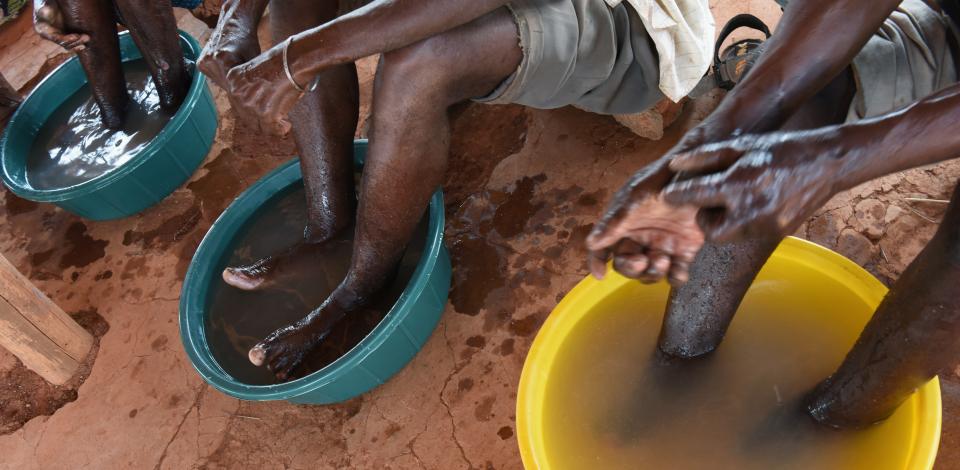
Introduction
When there is a delay in early diagnosis and treatment of leprosy, nerve damage and subsequently disabilities may occur. Through proper wound management and other techniques, leprosy patients learn to manage their impairments and/or prevent (the deterioration of) disabilities. This can be organized on an individual level or in groups.
Self-care in leprosy is a daily routine of:
- using preventative methods when performing daily life activities (e.g. using a cloth when picking up a hot pan; blinking the eyes frequently to prevent dryness);
- inspection for and treatment of wounds and infections which are not felt because of nerve damage;
- soaking, oiling and carrying for feet and hands to avoid dry and cracking skin;
- and stretching exercises to prevent stiffness and contractures (WHO, 2007).
Prevention of disability (POD) is an important component of 'quality leprosy services' emphasized in the WHO's Global Strategy (WHO, 2016).
